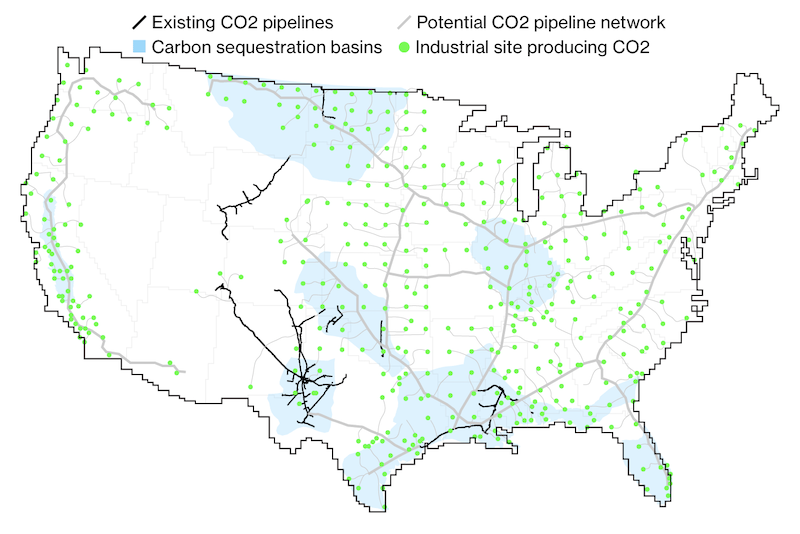Decarbon Daily - CO2 Infrastructure Bill Funding
Inside this issue
Carbon Dioxide Transportation Funding
CO2 transportation is a critical element to the emissions lifecycle, carbon capture, and emissions trading markets. As companies identify emissions and projects are launched to capture those emissions, infrastructure will be required to transport CO2 from the source to a destination for storage or utilization.
The Infrastructure Investment and Jobs Act lays out funding and project eligibility in DIVISION D - Energy for CO2 infrastructure that is needed in the coming years. For 2022, the appropriations are $600 million. In total from 2022 to 2026, the appropriations are $2.1 billion for CO2 transportation infrastructure.
Need to Know: CIFIA
The Secretary of Energy will establish the carbon dioxide transportation infrastructure and innovation program, known as CIFIA.
In Title III-Fuels and Technology Infrastructure Investments, there is Subtitle A-Carbon Capture, Utilization, Storage, and Transportation Infrastructure. SEC. 40304. Carbon dioxide transportation infrastructure finance and innovation defines CIFIA.
(1) CIFIA PROGRAM.—The term ‘CIFIA program’ means
the carbon dioxide transportation infrastructure finance and innovation program established under section 999B(a).
The eligibility and project selection is detailed in SEC.99B. Here is a brief summary:
(1) General project is eligible through letter of interest prior to application and meets criteria in SEC. 99B
(2) Creditworthiness and reasonable prospect of repayment
(3) Applications go to Secretary of Energy
(4) Project costs must equal or exceed $100 million
(5) Revenue sources include user fees, payments to obligor, or other revenue sources
(6) Obligor will be identified later from state, local, or public authority
(7) Beneficial Effects must attract public or private investment for the project and would be able to proceed at an earlier date
(7) Readiness must be able to start within 90 days
Current & Estimated CO2 Infrastructure
Today, there are about ~4,000 miles of CO2 pipelines that extend across four key geographies for enhanced oil recovery ("EOR"):
- Texas, New Mexico, and Colorado
- Wyoming
- Louisiana and Mississippi
- Oklahoma

Source: Bloomberg
Bloomberg forecasts potential CO2 pipeline that extends across the carbon sequestration basins and connects the industrial sites producing CO2. This expansive network would require significant investment and coordination with the carbon capture and sequestration projects.
Inside this Issue
🏛 The House just approved the biggest climate investment in U.S. history — now it heads to the Senate
💰 John Deere Among Investors in Renewable Fuel Technology Provider
🛰 Fleet Space Technologies secures $26.4m (USD) in Series B funding to enable global satellite connectivity for Internet of Things
📈 Five things you need to know about carbon emissions trading
Articles in this issue